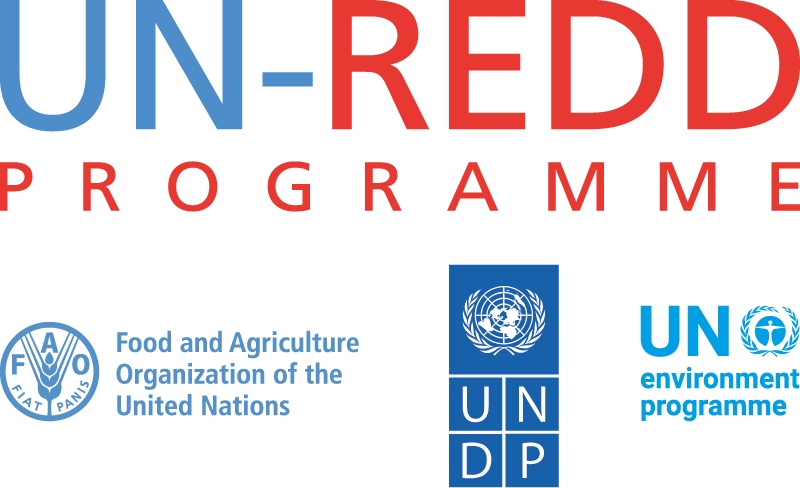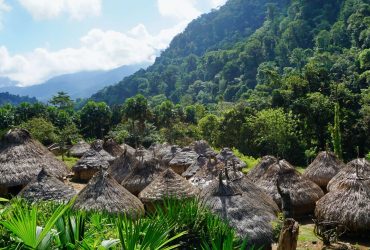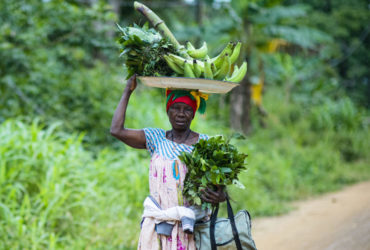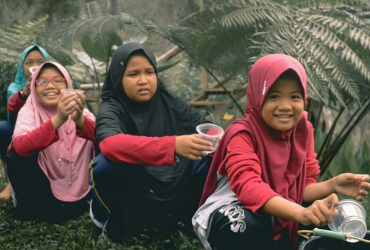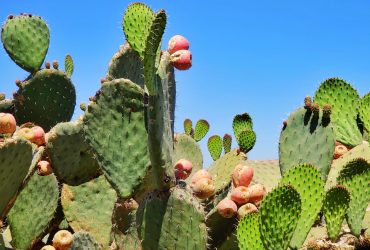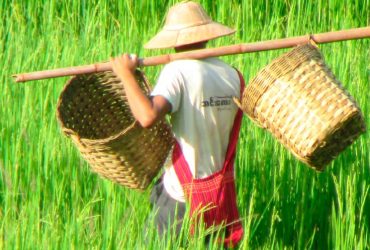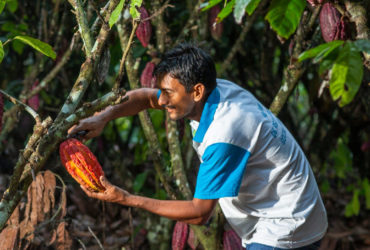PROGRESS AGAINST THE WARSAW FRAMEWORK
Côte d’Ivoire has already fulfilled the four pillars of the Warsaw Framework for REDD+ during the past years, with support from UN-REDD projects and UN-REDD technical assistance.
NS/AP: In 2020, the national REDD+ strategy (2017) and the subsequent REDD+ investment plan (2019) informed the ongoing NDC review process, in which UN agencies play key advisory roles. Two pioneering jurisdictional strategies focusing on the cocoa-forest nexus were designed in a multi-stakeholder way (in the regions of Cavally and Bélier).
FREL/FRL: Mapping of activity data for 2000-2020, including forest degradation, has been completed. The submission of the FREL has been postponed, in agreement with the national coordination, to a later date when the GCF scorecard for RBP becomes available (June 2021).
NFMS: UN-REDD also provided capacity building on the activity data processing chain, which has served to integrate forest degradation in the NFMS (including dense time-series analyses of historical satellite imagery archives to map all disturbances and distinguish deforestation from degradation for the period 2000-2020). The workflow allowed the technicians of the REDD Permanent Executive Secretariat to work in parallel through online solutions (SEPAL platform).
SIS: Finally, UN-REDD and the World Bank helped operationalize the national SIS by developing a beta version of the SIS online platform. In addition, a mechanism for gathering safeguards information from different institutions and stakeholders across the country was designed, including capacity building for safeguards information providers. These innovations will feed the second summary of information on safeguards to the UNFCCC (scheduled for 2021).
REDD+ IMPLEMENTATION
UN-REDD supported legal reviews for REDD+, including input to more than 10 draft decrees aiming to enforce the forest code, under the Ministry of Water and Forests, and covering diverse issues, such as benefit-sharing, NFIs, forest products, and community forestry.
UN-REDD also supported financial models and private-sector engagement on the forest-cocoa nexus. Economic models for sustainable cocoa production were produced and disseminated, with field testing started. They included an economic model for agroforestry, a model for cocoa swollen shoot disease, and financial solutions to support restoration at scale.
In addition, two jurisdictional strategies were designed in a participatory way, with financial support from the Governors’ Climate & Forests Task Force (GCFTF) initiative, to conciliate forest conservation and restoration with cocoa production. These represent pilots to guide country stakeholders and engage the private sector. Financial partnerships on the forest-cocoa nexus were advanced too, with UN-REDD support. For instance, Partnership 1for20 has started to mobilize private finance to support the implementation of sustainable commodity production, reforestation, and access to smallholder farmers. The briefing Making Agroforestry Work at Scale, which brings together many of the mentioned economic models that reconcile forests and cocoa, was presented to the World Cocoa Foundation and its partners, to stimulate the engagement of companies.
CHALLENGES AND SOLUTIONS
The COVID-19 pandemic, plus the 2020 presidential elections, disrupted national and field processes, as well as the ability of the UN-REDD Programme to provide timely and qualitative technical assistance to the country. Nevertheless, the country remained active in its endeavors, and UN-REDD used digital means and in-country experts to keep the mentioned streams active.
GENDER AND SOCIAL INCLUSION
The safeguards information parameters include a criterion on gender-equitable decision making (B5) as well as an indicator to track how the REDD+ framework integrates procedures on effective participation into decision making and equitable benefits sharing for men and women. In addition, the mechanism to gather safeguards information includes gender-disaggregated information where available.
The development of integrated forest-cocoa jurisdictional strategies in the Cavally and Bélier regions, which is supported by a GCFTF project, included gender mainstreaming efforts that built on UN-REDD gender knowledge and methods. Rural women and women’s organizations were among the key stakeholders who contributed to such jurisdictional strategies. The socially inclusive model was praised by the regional governments and the civic and community stakeholders alike, and knowledge products to disseminate the approach are under elaboration.
PARTNERSHIPS
UN-REDD works in partnership with different organizations and country partners, including the EU-REDD Facility, the GCFTF initiative, the World Bank, the GCF, and the Cocoa & Forest Initiative, among others. UN-REDD provides tailored technical assistance to help the country in their policy commitments (e.g. NDCs), mobilize partners and finance, and test innovations and pilot initiatives.
LINKAGES TO SDGS
The ensemble of work on the cocoa-forest nexus, including deforestation-free farming, economically sound agroforestry models and forest-ecosystem restoration plans, help the country advance substantially in several SDGs in an integrated manner, including SDG 12 (through sustainable farming), SDG 13 (climate mitigation through forest solutions and REDD+), SDG 15 (conserving and restoring forests) and SDG 17 (public-private partnerships for deforestation-free cocoa production).
